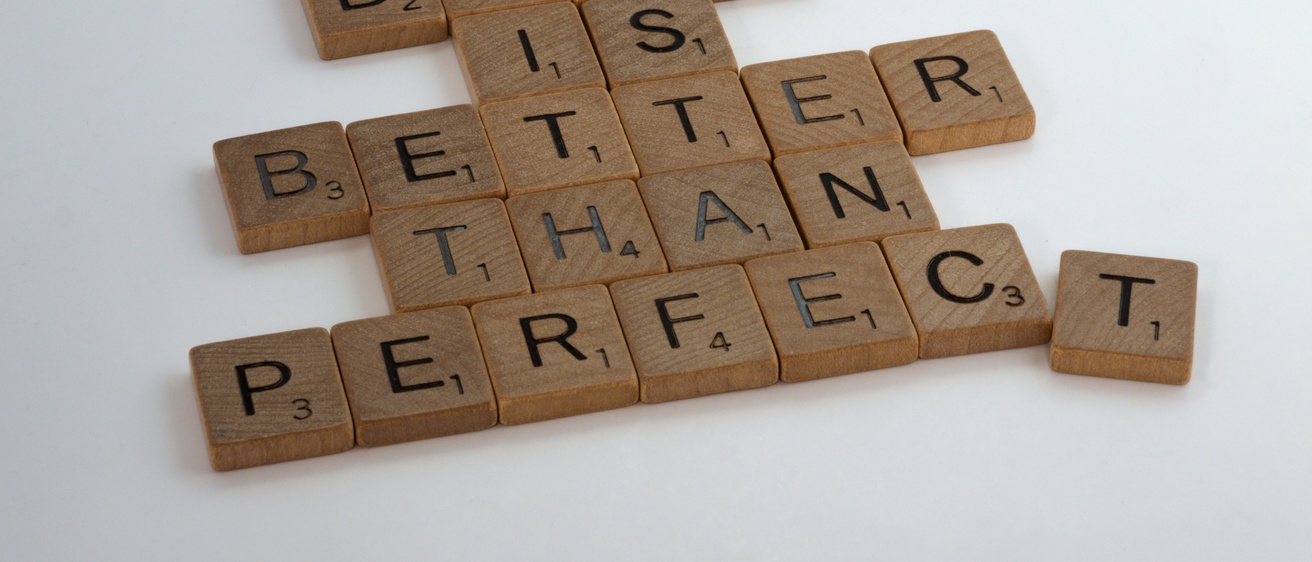Concerns around well-being affect learning, teaching, academic service, and overall work experience for many individuals and make it especially tough for those who measure their self-worth based on their success and achievement, as it is more difficult to attain high standards during times of distress and unpredictability.
As a result of the pandemic many people are experiencing overload, burnout, and Zoom fatigue. COVID-related disruptions have also interfered with research initiatives, derailed conference plans, and compelled students and instructors alike to quickly adapt to doing their work and studies in new ways. Coupled with structural inequities made more evident by the pandemic, these challenges cause additional distress to individuals with perfectionism. Perfectionism is a tendency to attribute self-worth to rigorous, self-imposed standards. Social isolation, another side effect of the pandemic, intensifies perfectionism.
Perfectionism is linked to procrastination, burnout, anxiety, eating disorders, and depression, but it can also positively affect self-efficacy and achievement motivation. Perfectionist tendencies are supported in academic culture and are associated with rigor and achievement. Due to structural inequities, individuals sometimes feel additional pressure to prove themselves based on social identity: race, gender, international, or first-generation status. The standards of excellent work are often ambiguous and indefinite. In academia we often only see people’s wins, not losses. Success may seem linear and uninterrupted, which increases perfectionism. To mitigate the impact of perfectionism on individuals and communities, we must first acknowledge that institutional power structures heighten it.
Perfectionism can be characterized by setting unrealistic and unattainable goals and viewing mistakes as failure. As an educational developer whose role involves supporting teaching excellence, I know making mistakes is an integral part of learning. Still, we don’t always help students understand that failure helps learning, and we often fail to accept that it’s part of the learning process for ourselves.
Although there are no easy solutions, there are strategies to manage perfectionism and concern over making mistakes. These are valuable considerations but not “best practices,” since your context, identity, and situational factors matter and can impact how you adopt these strategies.
Individual strategies
-
Focus on realistic goals and shift focus from perfection to meaning. For example, when setting goals, ask yourself about what result would be classified as “good enough” to fulfill this goal and make an impact. Set limits regarding time, place, and result, considering minimal and maximal parameters. For example, “Today, I will write the paper for a minimum of one hour and a maximum of two hours.”
-
Embed deliberate practice in your learning and plan for “imperfect” results as a regular part of a learning curve; provide yourself with many opportunities to practice.
-
Review your experience of failure and mistake-making. One creative way of doing this is developing a failure CV. You can list all the professional and educational opportunities you’ve missed or jobs or internships you didn’t get and combine them with your actual CV for a holistic vision of how failures correlate with achievements.
-
Normalize help-seeking: seek out mentorship, engage in a support network and counseling, and share your experiences regarding perfectionism.
Teaching strategies
-
Nurture a sense of belonging and foster a community of care. Co-create community guidelines with your students and provide them with group work opportunities. Include a reach-out statement for students in a syllabus that acknowledges that the ongoing pandemic impacts well-being and can intensify perfectionism experiences for students. Share campus resources with your students and let them know how they could reach out to you for support.
-
Conduct a survey to learn more about students’ experiences and make informed teaching decisions. For example, “What would you like me to know about you and the circumstances under which you are learning this semester? What in this course is helping you to learn? What is getting in the way of your learning?”
-
Make teaching and learning transparent to your students, setting measurable goals, providing clear expectations in the syllabus, and formulating concrete grading criteria. One activity to consider is the “anti-rubric” activity, which increases students' metacognitive awareness. When giving an assignment to students, ask them to collectively brainstorm what it would take to 'fail' it.
-
Provide opportunities to reflect on the learning process. This can be as simple as a one-minute paper in which students quickly reflect on their progress or as involved as asking students to create a learning portfolio. Some instructors ask students to write a brief letter to a future student about their experiences learning from mistakes. Another version of this is to ask students to craft a letter to themselves that reflects on their experiences in the course, goals, challenges, strengths as learners, and the resources they plan to access.
-
Share your experience navigating perfectionism. Sharing how you worked through reviewer comments on a journal article or what you learned from an experiment that initially failed can be helpful, even as you acknowledge how your social identity or privilege impacts your experience.
